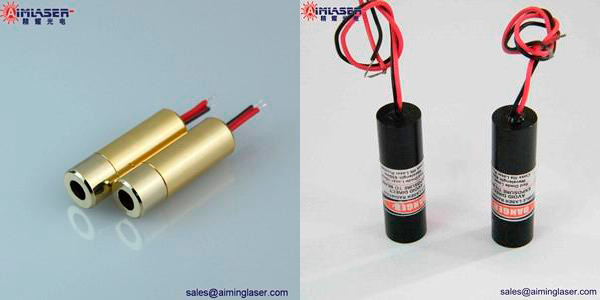High-power laser diodes are playing an increasingly important role as light sources for material processing laser systems. Infrared laser rods have extremely high optical power, and their power and efficiency have now reached a whole new level. Also of note is the blue wavelength laser rod, which can reach optical powers of up to 100 watts (W) in the lab, a huge leap forward.
The high power density makes laser radiation an efficient tool for delivering a quantitative amount of energy to specific areas of the workpiece and precisely heating these areas without contact. Typical applications include engraving, coating, welding and cutting of various metals and plastics. At present, the application of high-power semiconductor lasers is more and more extensive, it can be used directly for laser processing, and can also be used for pumping fiber or solid-state lasers. Compared with CO2 lasers or flash lamp pumped solid-state lasers, it is more efficient and more compact. The core parameters of laser diodes for material processing include wavelength, optical power, electro-optical conversion efficiency (WPE), and beam quality. These are necessary parameters to measure the efficiency and cost-effectiveness of a complete system. Higher optical power and efficiency reduce the number of laser chips required in the system, thereby reducing coupling and cooling costs and optical system complexity. The quality of the beam determines the amount of laser power that can be coupled into the fiber, and the appropriate wavelength ensures that the processing material fully absorbs the laser energy.

Copper is one of the most important raw materials in electrical engineering and plays a central role in, for example, power transmission in batteries, motors or circuit breakers. But copper reflects a lot of infrared wavelengths, and if an infrared laser is used for processing, very high laser power is required. In addition, the controllability of the process is relatively poor. Once copper is melted at high temperatures, porosity and spatter are formed, and poor soldering quality can also affect properties such as electrical conductivity. Copper, on the other hand, absorbs blue light up to 12 times more than infrared light, allowing the highest system efficiency in processing. At present, the optical power of blue industrial semiconductor lasers can reach several hundreds of watts to several kilowatts. The development of basic high-power blue laser diodes is a key task, and the output efficiency and power of blue laser diodes have been greatly improved. In order to use industrial diode laser light sources for non-ferrous metal processing, they must continue to improve their performance levels. Similar to infrared systems, blue light systems also rely on high-power laser rods. The blue laser rod has an output power of 50 W and a continuous wave (CW) working efficiency of 38% at 25°C. High power laser rods are the first choice for building compact high output power laser sources.
Infrared diode lasers have been used in industrial materials processing for many years. As these systems become more widespread, the cost and energy efficiency of the overall system becomes a focus. The current portfolio of infrared products for materials processing includes high-power laser rods at wavelengths from 800 to 1060 nm, with optical powers up to 250 W, with efficiencies of 60% at 808 nm and over 65% at 900 nm. In addition, there is a mini-rod designed for efficient coupling of the beam into the fiber, which can achieve up to 500 W of power under quasi-CW operation. They are suitable for applications such as imprinting, pumping, cosmetic applications such as hair removal, or remote sensing. The individual emissions at 915 and 976 nm have different emission spot widths for coupling into different fiber geometries.